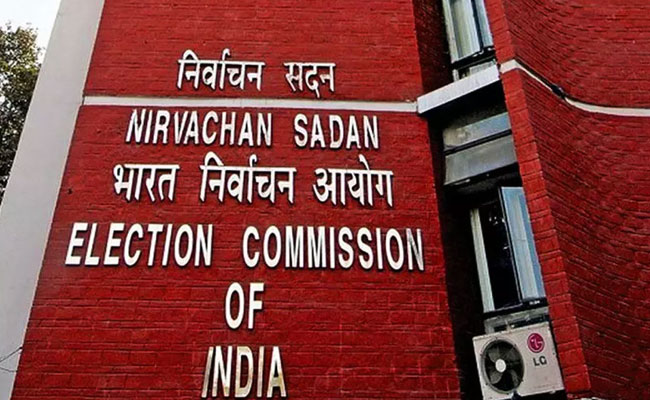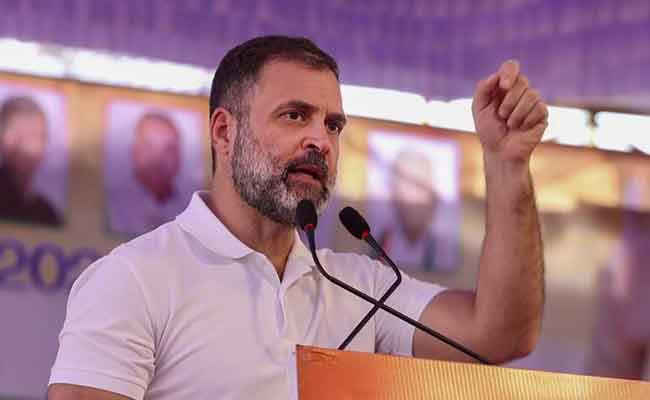Kolkata (PTI): At a time when the Election Commission pledges to leave no stone unturned to bring eligible voters to polling stations to exercise their franchise, not many electors are aware of their right to "refuse to vote" even after registering their identities before the presiding officer.
That right, which is separate from the provision to vote under NOTA, can be exercised under the 'Conduct of Elections Rules, 1961 Rule 49-O', which elaborates the little-known option for electors to abstain from voting even after reaching the polling booth.
While the NOTA (None Of The Above) option allows voters to express their lack of confidence in any of the candidates seeking mandate, the refusal to vote' option allows an elector to shun the poll process in its entirety.
The 49-O clause directs the presiding officer that once an elector refuses to vote inside a booth after having his credentials verified, the officer shall put "a remark to this effect against the entry in Form 17A and the signature or thumb impression of the elector shall be obtained against such a remark".
"This is not a new introduction of rights. It has existed for some time. The electors, though, have very little idea about it. Most people are unaware of this option," a senior official of the EC told PTI.
The abstention from voting would, of course, play no role in affecting poll outcome and the candidate who secures the highest number of valid votes polled, irrespective of his winning margin, would be declared elected, he clarified.
On whether the EC would raise the awareness of the electors in this regard, the official said, "There is no such plan at the moment."
Underlining the advantage of rule 49-O, he stated that the rule "provided an option to reject all candidates while simultaneously keeping a check on bogus voting".
Statistics from the EC state that in the 2019 edition of general elections, 1,389 votes were rejected due to other reasons (at polling station)' across India.
It could not be ascertained, though, whether all or a fraction of these votes were rejected for people exercising their rights under rule 49-O.
The rule states that "if an elector, subsequent to his electoral roll number duly entered in the Register of Voters' Form 17A as well as his signature/ thumb impression duly taken, decides not to vote, he shall not be forced to cast his vote".
"In the Form, in place of 'Under Rule', left without voting or 'Refused to Vote' will be inserted for those electors who after signing in Register of Voters' wish to leave without voting," it says.
In the event of the "allot" button on the EVM's 'Control Unit', which readies the ballot unit for "recording a vote", getting activated when an elector refuses to vote, the presiding officer or the third polling officer should direct the next voter to proceed to the voting compartment to record his/her vote, the poll panel official pointed out.
However, if the "allot" button has been pressed to "release voting" on the ballot unit when the elector refuses to vote, the presiding officer would then have to reboot the control unit by killing its power and disconnect the VVPAT, before enabling the machine to accept the next vote, he said.
"The power needs to be switched on after the busy' indicator goes off and the close' button becomes functional to close the poll," he explained.
Let the Truth be known. If you read VB and like VB, please be a VB Supporter and Help us deliver the Truth to one and all.
Bengaluru (PTI): Nearly half of Bengaluru's voters did not turn up to vote in the Lok Sabha elections on Friday.
Voting took place in 14 constituencies in Karnataka, with the Election Commission estimating the turnout at 69.23 per cent.
However, the percentage of voters who exercised their franchise in three urban constituencies in the city -- Bangalore Central, Bangalore North and Bangalore South -- was significantly lower.
The approximate voter turnout in Bangalore Central was 52.81 per cent, Bangalore North - 54.42 per cent and Bangalore South - 53.15 per cent.
In the 2019 Lok Sabha election, the turnout in Bengaluru Central was 54.32 per cent, Bengaluru North - 54.76 per cent and Bengaluru South - 53.70 per cent.
Election Commission officials were disappointed that the voter apathy persisted despite their vigorous efforts to increase participation.
"There is no explanation for it. That is the truth," a top EC official said.
According to poll officials, scorching summer heat is said to be one of the reasons for the people not turning up at polling booths in the city.
However, Bangalore Rural saw an approximate voter turnout of 67.29 per cent.
Mandya and Kolar had a turnout of 81.48 per cent and 78.07 per cent, respectively.
The Election Commission in Karnataka came out with several initiatives to increase turnout in this election in urban constituencies -- from encouraging the public to use various apps to putting QR codes on voter slips to locate polling booths.
Voter Helpline, 'Know Your Candidate' and updating details about number of voters in queue and kind of parking facilities available at polling booths, especially in Bengaluru, and an elaborate booth election management plan were among the other measures taken.
The EC had also come up with better facilities at the polling stations in the urban constituencies based on the feedback they received following a survey conducted by the Election Commission in the areas which registered low voter turnout in the 2023 Karnataka Assembly election and the previous Lok Sabha elections.





